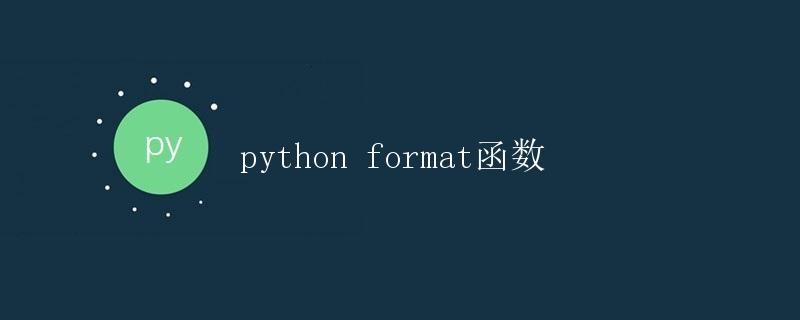Python中的format函数详解

Python中的format()函数是一个非常强大的字符串格式化工具,可以用来将不同类型的数据格式化成指定的字符串样式。在本文中,我们将详细介绍format()函数的用法、参数以及示例代码。
1. format()函数的基本用法
format()函数的基本语法如下:
result = '{}'.format(value)
其中,{}是一个占位符,value是要格式化的数据。下面是一个简单的示例:
name = 'Alice'
message = 'Hello, {}!'.format(name)
print(message)
运行结果为:
Hello, Alice!
2. format()函数的位置参数
除了简单的用法之外,format()函数还支持使用位置参数进行数据格式化。在{}中可以指定参数的位置,从0开始计数。示例如下:
name = 'Alice'
age = 25
message = 'Hello, {0}! You are {1} years old.'.format(name, age)
print(message)
运行结果为:
Hello, Alice! You are 25 years old.
3. format()函数的关键字参数
除了位置参数,format()函数还支持使用关键字参数进行数据格式化。在{}中可以指定参数的名称,示例如下:
name = 'Alice'
age = 25
message = 'Hello, {name}! You are {age} years old.'.format(name=name, age=age)
print(message)
运行结果为:
Hello, Alice! You are 25 years old.
4. format()函数的格式化选项
在{}中还可以添加格式化选项,例如指定数据的宽度、精度等。下面是一些常用的格式化选项示例:
{:d}:格式化为整数{:f}:格式化为浮点数{:s}:格式化为字符串
示例如下:
num = 12345.6789
formatted_num = '{:.2f}'.format(num)
print(formatted_num)
运行结果为:
12345.68
5. format()函数的高级用法
除了基本的用法之外,format()函数还支持一些高级的功能,例如格式化日期、金额等。下面是一些示例:
5.1 格式化日期
from datetime import datetime
now = datetime.now()
formatted_date = '{:%Y-%m-%d %H:%M:%S}'.format(now)
print(formatted_date)
运行结果为类似2022-01-01 12:00:00的日期时间格式。
5.2 格式化金额
amount = 12345.67
formatted_amount = '${:,.2f}'.format(amount)
print(formatted_amount)
运行结果为$12,345.67的金额格式。
6. 总结
format()函数是Python中一个非常强大的字符串格式化工具,可以灵活地将不同类型的数据格式化成指定的字符串样式。通过本文的介绍,相信读者已经掌握了format()函数的基本用法以及一些高级功能。
 极客教程
极客教程